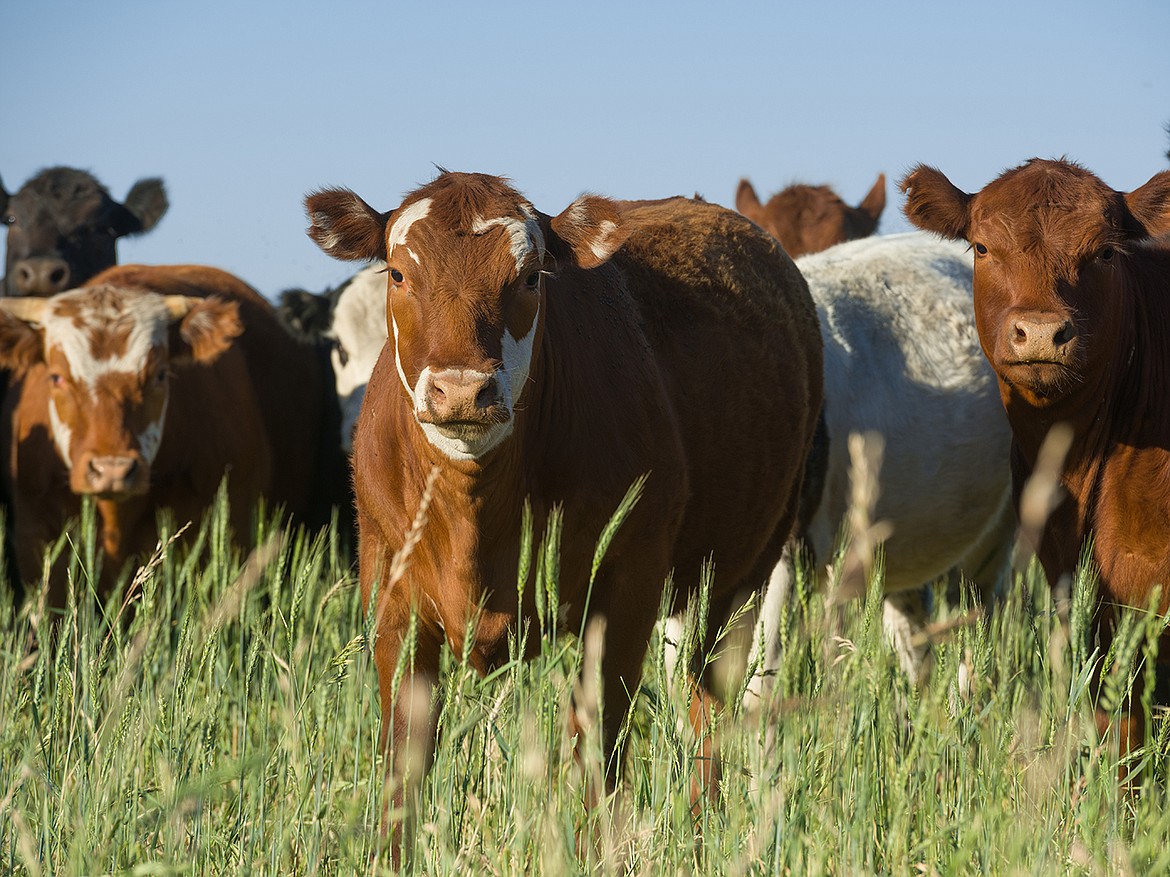Keep your bovine feeling fine: Tips for managing pain in cattle
Unlike many animals that vocalize their discomfort, cattle tend to suffer in silence—making it all the more important for an owner to recognize the subtle signs of pain. Whether from age, injury, or illness, early detection of pain is an important step in bringing an animal back to health.
Cattle are like most prey species in that they tend to hide their pain, says Dr. Jenna Funk, a clinical assistant professor & beef cattle veterinarian at the Texas A&M College of Veterinary Medicine & Biomedical Sciences’ Veterinary Education, Research & Outreach campus.
“When pain reaches the threshold where it starts affecting behavior, one of the first signs will be reduced feed intake,” Funk said. “If it hurts to move, they will be reluctant to move. Cattle will also grind their teeth when they are uncomfortable; you can hear it when they grind them hard enough.”
If the pain is associated with a single limb, they may limp to reduce the amount of weight placed on that leg. If the source of pain is in the abdomen, cattle may tuck their bellies up by standing with all four feet close together.
Depending on the cause of the pain, there are several options a veterinarian may suggest for treatment. The most common pain management medications for cattle are non-steroidal anti-inflammatory drugs (NSAIDs), which can come as injections, oral pills, or a pour-on liquid.
“Steroids can also be used for pain management in short-term situations,” Funk said. “While long-term use of steroids is not recommended because of the negative impacts they can have on the immune system, short courses can be very effective at reducing swelling and relieving pain.”
There are also several non-medication options that can help relieve pain in cattle, including acupuncture and chiropractic manipulation by licensed practitioners.
“Pain associated with the feet can often be managed with corrective foot trimming,” Funk said. “Making sure that all four feet have proper confirmation (structure and alignment) will allow the animal to evenly distribute their weight and reduce the chances of secondary musculoskeletal injury from favoring a painful or misshapen foot.”
To prevent painful injuries from occurring in the first place, owners can commit to low-stress handling techniques, such as using pressure points to move cattle instead of noise and fear.
“Move slow and never surprise cattle. This will reduce the likelihood of cattle running and pushing each other, which can lead to injury,” Funk said. “In addition, animals recovering from injury should be kept on solid, surefooted ground and with only a few herd mates to prevent potential re-injury from shoving and pushing.”
Maintaining clean and well-lit facilities can also reduce the likelihood of injury.
In addition to the ethical reasons for reducing pain in cattle, owners will likely notice other benefits when herds are kept happy and pain-free.
“Well-taken-care-of animals perform better,” Funk said. “Controlling pain will increase production and help make the animal more efficient, which, in turn, is more profitable for the producer.”
Whether owners keep cattle as pets or production animals, reducing pain should be a top priority. By keeping an eye out for subtle behavioral differences, you can help make sure your cattle experience as little pain as possible.
Pet Talk is a service of the College of Veterinary Medicine & Biomedical Sciences, Texas A&M University. Stories can be viewed on the web at
vetmed.tamu.edu/news/pet-talk. Suggestions for future topics may be directed to editor@cvm.tamu.edu.


